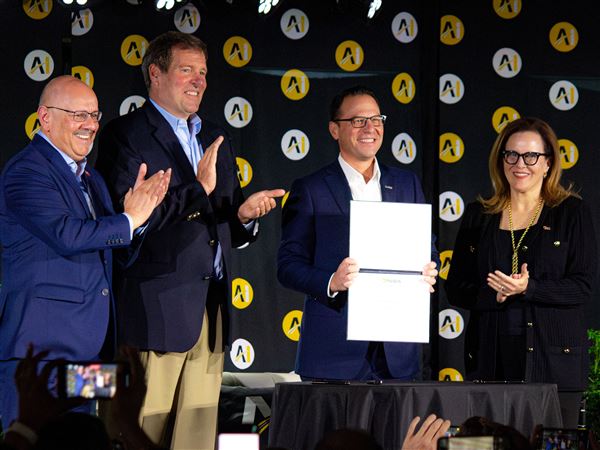What would the Philip Roth of Squirrel Hill look like? That is the premise (or one of them) of Lisa Halliday’s “Asymmetry” (Simon & Schuster, $26). Ms. Halliday’s main character, Ezra Blazer, is from Pittsburgh, not Newark, N.J., and his character is an animated version of Mr. Roth for good reason — the author worked for eight years at The Wylie Agency, which represents Philip Roth.
The two had a romantic relationship at one time. Although a reading of this multilayered book as a simple roman à clef of the education of a young woman through her intimate knowledge of a successful older writer would be unfair to what Ms. Halliday is trying to accomplish. As she said in a recent interview, “Of course there are details of Alice’s life that overlap with my own, but so much is invented for the sake of the narrative. ... Philip, more than anyone, knows that’s what writing is like.”
So where is the reality and where is the fiction in a book by the one-time paramour of a famous writer? First, the imagination: Where Mr. Roth is explicit, Ms. Halliday assumes the reader has a role and not all has to be filled in, as when the younger woman and the older man are having a post-coital chat and he asks who taught her what she knows. “No one,” she said, picking a crumb off her lap and eating it. “I just imagine what would feel good and I do it.” Her lover’s reaction? “Well, you have quite an imagination.” And that is where we are left for the most part, to our own devices. Not that there aren’t some great innuendos here.
The fiction is partly what the young woman, Mary-Alice Dodge, learns about, from such bits as this sentence taped over Ezra Blazer’s writing desk that she then quotes back to him in a phone conversation: “Endeavors in art require a lot of patience.” And also, “An artist, I think is nothing but a powerful memory that can move itself at will through certain experiences sideways.”
Which brings us to the second section of “Asymmetry” — “Madness,” which recounts the experiences of Amar Jaafari, a child of Iraqi immigrants born over Cape Cod on a plane to New York, which makes him a possessor of “two passports, two nationalities, no native soil.” Jaafari is being detained in a London airport and recounts his thoughts and memories while in confinement.
As we read this story, we realize that there are a few similarities, lines of confluence between the tales, such as a recurrence of the quote about artists moving through life sideways. Speaking of a friend of his who is a journalist, he says, “Maybe East and West really are eternally irreconcilable — like a curve and its aymptote, geometrically fated never to intersect.” His brother, who has chosen to return to Iraq instead of remaining in the U.S., responds with the quote from a volume of the writings of Stephen Crane about artists having memory that moves sideways.
I won’t give away the connections, though I will say that in the third section, Blazer mentions a young novelist he knows. The Blazer of Squirrel Hill, as portrayed here is a kinder and gentler soul than the public persona of his counterpart Mr. Roth. Blazer gives cash to the Muslim hot-dog seller near his apartment, multiple coats to a homeless man who stands in front of the New York food institution Zabar’s and supports the family of a woman in France he knew during his World War II military service. Blazer is also concerned that his lover and protégé not get involved with a man who might come along and beat her up.
“Are you game?” Ezra Blazer challenges two different women in this novel, to raise their interest in him. As a gambit, it is clever, making the one being propositioned have a sense that if she does not take the provocation she is somehow not up to speed, missing out. For a reader, the challenge is to enter the imaginative universe of the author as she has entered to that of her characters, expanding herself and her knowledge.
Beth Kissileff, a Pittsburgh-based writer and freelance journalist, is editor of “Reading Genesis” and author of “Questioning Return.”
First Published: April 21, 2018, 10:00 a.m.















